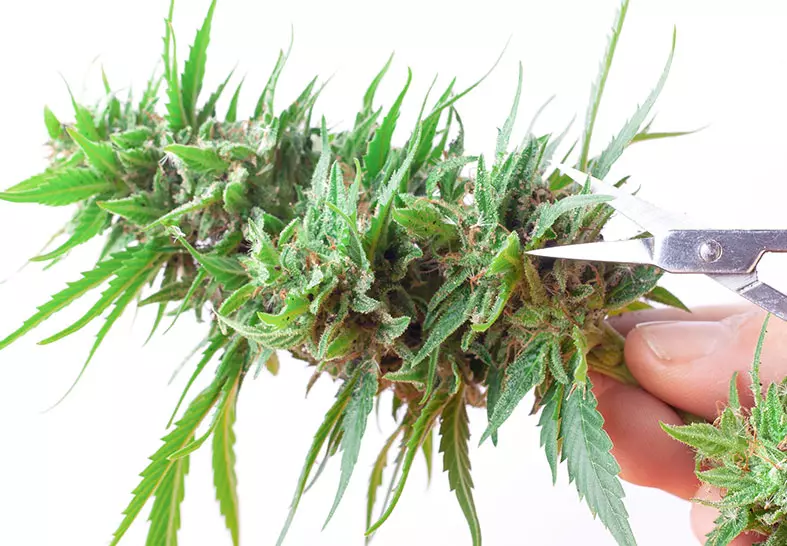In Part 1 of our look inside the cannabis industry, we examined what it’s like to work in legal cannabis, how to find an entry-level position, the pitfalls of working in a corporate cannabis environment, and why groups like United Weed Workers and the the Cannabis Workers Coalition are mobilizing to protect employees in the cannabis industry.
In Part 2 of our series, we’ll unravel some of the negative aspects of corporate (legal) cannabis jobs, and explore what it means to take the alternative, “traditional” entrepreneurial route into working in the cannabis industry.
Why Corporate Cannabis Isn’t Great for Workers
One negative effect of corporate consolidation in the legal cannabis industry is obvious: it can make it nearly impossible for consumers to find decent flower! Florida’s medical cannabis program, in which only five licenses have been issued to large conglomerates, is the most heinous example of a cannabis industry monopoly. One licensee, TruLieve, had their vape products recalled by the Pennsylvania Department of Health for contaminants and additives, while another, Curaleaf, is facing lawsuits in Oregon for mislabeling high THC lozenges, and stealing nearly $216,000 of employee tips, plus they had a product recalled for mold in Florida.
According to United Weed Workers co-founder Anya, corporate consolidation means that many cannabis operations grow in scale so quickly that they open up new stores that pay less competitive wages and put no effort towards sales. Then, when they fold, employees are suddenly out of work while owners collect insurance payments for their “failed” business.
Workers in many legal cannabis markets face the worst-case scenario of being managed by people with no prior cannabis cultivation experience who often have incentive to hire yes-men from outside industries to keep costs low, instead of hiring from within. This lack of diversity in hiring has also led to an explosion in harassment inside the legal cannabis industry.
Traditional Market Cannabis Jobs
Cannabis entrepreneurship has been around for as long as cannabis has been commercialized, which means that there are tens or even hundreds of thousands of unrecorded cannabis workers working in large-scale black-market operations, which we now refer to as the “legacy” or “traditional” market. Humboldt County, one of the three counties that make up California’s famed Emerald Triangle, has had a large part of its economy dedicated to cannabis production for generations. “Half of the people who live and work on the [Humboldt] Hill are ‘seed-to-start,’” says a Humboldt operator who goes by Sticky Will. “You'll see kids who are 7 or 8 years old trim weed with their parents, and they know to just go to their rooms while their parents smoke in the house.”
Humboldt County is home to many legal cannabis farms and distribution facilities, but legal operations are typically managed by people in suits rather than hemp T-shirts. “Lots of the people running farms in Humboldt are older hippies,” Sticky Will says. “They wear all tie-dye, [they] only grow with sunlight, water, and natural amendments. They don’t have phones, you just have to know these guys, go up the backroad to their property, knock on the door and hope they’re home.” In contrast, many “suits” gravitate to cannabis for its profit margins, and often don’t even use cannabis themselves. Among traditional market growers, it’s widely accepted that it’s impossible to judge the quality of cannabis products as a non-user.
Sticky Will says that “trimmigrant” life, in which people travel to spend stints on local cannabis farms and trim the harvest, is still in full force. “You’ll see people standing on the side of the road looking for jobs trimming everywhere in Humboldt,” Sticky Will says. “We pay expert trimmers about $150 per pound.” Some trimmers opt to get their payment in cannabis so they can flip it and potentially make more money that way.
 A traditional market farmer in Northern California
A traditional market farmer in Northern California
According to Sticky Will, corporate cannabis farmers have used their capital to up production to unsustainable levels, resulting in stock staying on farms for years, which can cause a massive drop in value. Sticky Will also said that illegal overgrowing is generally not a concern for these facilities, unless they’re stealing resources like water or electricity, or causing environmental damage. Workers in traditional-market cannabis jobs face many issues they have no recourse for, fearing operation could be shut down entirely. We weren’t able to find data about workforce conditions in traditional market operations for this article, but reasonable assumptions can be made that conditions are worse across the board in traditional-market operations, since the risk in working illegally is greater. It’s also harder to bring worker abuses in the traditional market to light.
Bootstrapping Your Business
Nearly all of today’s popular cannabis brands were started by one or two people with just enough space, money and goodwill to get a great harvest. If their harvest is special enough, they can use the resources from that harvest to expand their grow the next time around. Fledgling cultivators can think of it as trading their first harvest for a second light. Eventually, through several years of hard work and consistency, they can scale up to grow out of rooms instead of tents, or houses rather than rooms.
This “bootstrapping” isn’t always possible for everyone who gets in the game, but reinvesting as much of your resources as possible back into a successful operation is crucial for rapid growth, just as with any business. The only surefire way to keep people interested in your product is if it has some amount of perceived value, which is determined by several factors, the first of which is the timeliness of your offering. The main reason that so many notable California brands are still viable is because they started up at a time when it was relatively easy to sell weed in the Golden State, got popular, and funneled profits into paying for a recreational cannabis license under Proposition 64.
Another factor which is exclusive to the cannabis industry is that the best way to make waves is to grow high-quality flower a.k.a. “fire.” Being able to purvey fire is the single most important action a cannabis business can exploit to get attention from consumers. Cultivating a plant with distinct genetic expression and potency is bread and butter for industrial innovation.
Alternative Ways to Succeed in Weed
While the average person probably associates traditional cannabis entrepreneurship with selling cannabis illegally, there’s an entire support services sector that doesn’t touch the plant at all. This is where many ancillary businesses come in, like cannabis branding, design, and small-scale packaging. There are entrepreneurs who basically just sell stickers without ever touching cannabis; the business of providing branding materials and access to quality products to flip (the Frank Lucas blue magic “stamping” model) is alive and well.
 Traditional market cannabis packaging
Traditional market cannabis packaging
Ultimately, starting your own cannabis-adjacent business requires the same visionary skills and good fortune as starting any other business. It requires identifying a gap in the market, and then offering a needed service to prospective customers. The sticker sector has become popular because good branding has helped nearly double the wholesale unit price of indoor flower. Other one-in-a-million ventures like Weedmaps, Leafly and Headstash have become massively valuable through using data and advertising like Facebook and Google, but with a focus on cannabis marketplaces.
The Last Nug
Just like any other job, working in the cannabis industry is labor. Cannabis employees are not immune to the labor abuses that are present in every other industry in America. In the legal cannabis industry, unscrupulous management behavior can be found just as in other retail, service and clerical positions, with the added constraint of being under surveillance with almost no union representation. While positions in the legal weed industry are often listed as more enticing and better-paying than other jobs, wages are going down as new stores open, and even the most experienced floor workers are only making roughly $18 an hour with no clear path to management (not that becoming a manager would solve their problems).
On the traditional market side, the situation can be marginally better, at least for people who can tolerate some level of risk. Some entrepreneurs make it big, but the chance of striking at the right time with an idea that will catch on is a gamble. The more surefire way to make money on the traditional market is to flip wholesale amounts of cannabis, which is a felony in Canada and many US states. Working in the cannabis industry is still a precarious situation despite being a legal profession in a booming sector in many states’ economies. Ultimately, if we want cannabis jobs to be the beacon of economic hope that cannabis executives and industry advocates say it is, we as a workforce must organize and fight for what is owed to us. We must demand measures that will ensure a safe, healthy and prosperous workplace for all.
